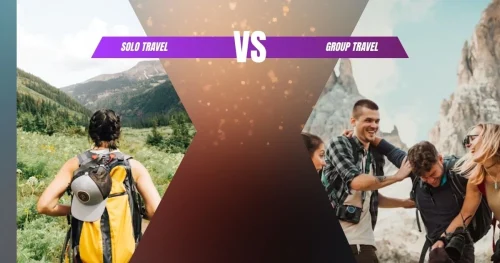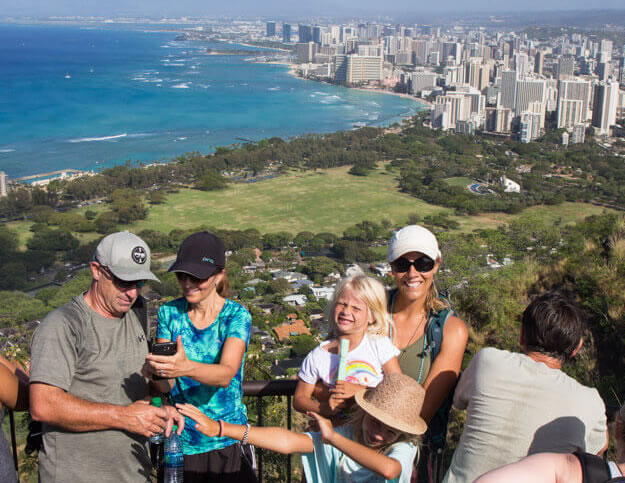In an era where travel is less about the typical beach resort and more about flexible itineraries, spontaneous getaways, remote‑work adventures, and immersive local experiences, the notion of “travel insurance” calls for an upgrade. Gone are the days when you picked a policy covering lost luggage and cancelled flights. If you’re setting off on a new‑age trip, think digital‑nomad lifestyle, long‑haul stopovers, multi‑destination self‑guided adventures, you’ll want a travel insurance plan that speaks your travel language.
Below, we’ll dive into what defines a “new‑age” trip, what you must look for in a policy, how to match coverage to your unique travel style, and some real‑world examples and tips to help you pick the best fit. Whether you’re an occasional explorer or a full‑time wanderer, this will guide you toward travel peace of mind.
What makes a “new‑age” trip different?
Traditional vacations usually follow a tidy, predictable schedule: fly to your destination, check into a resort, enjoy a few planned activities, then fly home. New‑age trips, however, throw that structure out the window. They prioritize flexibility, exploration, and a mix of experiences that go beyond the standard tourist itinerary.
Flexible duration and destinations: Rather than sticking to a fixed timeframe or a single destination, new‑age travelers might start in one country, work remotely for a few weeks, then hop to islands, countryside retreats, or entirely new continents. The journey can stretch or contract depending on mood, opportunities, or local discoveries.
Multi-component travel: These trips often combine several types of experiences. You could blend co-working stays with adventure sports, cultural immersion, volunteer projects, or wellness retreats. Instead of a single focus, each leg of the journey adds a new layer of excitement and learning.

Adapting to changing plans on the fly: Flexibility is key. Unlike conventional vacations, where plans are often finalized months in advance, new-age travelers might extend stays in a favorite city, pivot to an unexpected destination, or add spontaneous side trips, embracing serendipity over strict schedules.
Higher risk and variety in activities: The adventurous nature of these trips introduces both novelty and unpredictability. Hiking in remote mountains, diving off isolated beaches, or navigating off-grid transportation all carry unique risks. Staying in different regions for an extended period may also expose you to varying local healthcare systems, so preparation and adaptable insurance are essential.
Blurred lines between travel and living: New-age trips are not just vacations. They often feel like a temporary lifestyle. You might spend a month in a bustling city apartment, another month in rural lodges, and a final month on work-travel projects. The journey becomes a blend of living, working, and exploring rather than a simple getaway.
All of this means that travel insurance for new‑age trips has to be more than a safety net for lost luggage or cancelled flights. It must adapt to the mobile, flexible, and high-activity lifestyle, covering everything from remote healthcare access to adventurous pursuits and unpredictable schedules.
Key coverage features to hunt for
When shopping for travel insurance for your new‑age trip, don’t settle for the standard fare. Here are features you must drill into:
Global medical and emergency evacuation
Your health coverage is the backbone of any travel insurance, and for new‑age trips, it becomes even more critical. Standard policies often only cover basic medical reimbursement, which might be fine for a short city break, but won’t suffice for extended stays, remote locations, or adventurous activities.
Check that coverage limits are realistic for the countries you’ll be visiting, as healthcare costs can vary drastically. For example, treatment in Western Europe can be significantly more expensive than in parts of Southeast Asia, so low-limit policies may leave you exposed.
Lastly, ensure access to 24/7 global assistance services. These services provide critical support, including medical advice, translation for local healthcare providers, coordination with local hospitals, and guidance on navigating unfamiliar healthcare systems. Having this kind of support can make a huge difference, especially if you’re traveling solo or in remote regions.
Trip cancellation, interruption, and change flexibility
New‑age trips rarely stick to a rigid schedule, so your travel insurance needs to offer more than basic coverage. Cancellation coverage is essential for any pre-booked flights, accommodations, or experiences because it protects you if unexpected events such as illness, family emergencies, or natural disasters force you to change your plans.
Equally important is interruption coverage, which compensates for unused portions of your trip if you need to cut it short. This ensures you’re not left out of pocket when schedules change unexpectedly, whether due to flight cancellations, political unrest, or other disruptions.
Baggage, gear, and travel delays
Your equipment might include more than just clothes, such as a laptop, camera gear, outdoor equipment, or digital nomad essentials. Coverage should include loss or damage of items, baggage delay cover if your trek is delayed, and travel delay coverage for lodging and food assistance.
Activity and adventure coverage
If your trip includes scuba diving, trekking, off-grid transport, or unique excursions, verify whether these high-risk activities are included. If you plan to include these, choose a policy that covers them or add an adventure-sports option. Remote areas might be excluded unless specifically covered.
Long‑trip or multi‑trip coverage
For digital nomads, slow travel enthusiasts, or those with multiple stops, multi-trip or annual plans can be a cost-effective option. For long single trips, confirm the policy allows extended stays without invalidating coverage. Some policies are built for holiday vacations only and might exclude working travel or long-haul stays.
Pre‑existing conditions and exclusions
Ensure your policy covers pre‑existing medical conditions or offers a waiver. Read exclusions carefully, as engaging in excluded activities or visiting high-risk regions can void coverage.
Smart clauses for digital‑nomad style
Cover electronics and workspace equipment specific to your travel style. Check destination stay limits, legal support, and visa requirements, especially if you’ll be working remotely.
Matching the policy to your travel style: 3 scenarios
Scenario A: Digital Nomad Month‑Hopper
Spend 4 months hopping between Lisbon, Chiang Mai, and Bali, combining work, co-living, and local cultural experiences. Prioritize long-stay travel insurance that covers all destinations. Ensure equipment coverage for laptops and work essentials, comprehensive medical coverage, and consider activity coverage if your plans include activities such as surfing, trekking, or other adventurous outings. Trip interruption coverage can be optional, depending on your flexibility.
Scenario B: Adventure and Culture Backpacker
Backpack through South America for three weeks, staying in hostels, hiking volcanoes, and exploring jungle lodges. Look for high-risk activity coverage to protect against mishaps in adventure sports, robust medical evacuation coverage, and coverage for your essentials, including baggage and gear. Ensure that trip cancellation coverage applies to any pre-booked accommodations or tours, and verify the flexibility to adjust your itinerary on the fly.
Scenario C: Frequent Short Trips plus Co‑Working
Take frequent 7–14-day trips across Asia and Europe, blending leisure with remote work. Consider multi-trip or annual insurance plans for cost efficiency. Ensure coverage includes gear and digital equipment, and verify that medical and emergency evacuation coverage are included. Don’t forget to consider trip cancellation coverage, especially during peak travel booking periods, and review any credit card benefits that may supplement your policy.
Real‑world examples and local considerations
In the Philippines, travel insurance plans can be purchased at very low premiums, offering high medical coverage. Adventure or activity-specific coverage is crucial for activities like skiing, diving, or trekking. Comprehensive plans may cost 4–10% of the prepaid trip cost. Buy travel insurance as soon as you book flights or accommodations to avoid missed coverage. Avoid invalidation by declaring pre-existing conditions, avoiding excluded activities, and following local travel advisories.
Step-by-step: How to choose your travel insurance
List your trip profile: duration, destinations, main activities, gear, and work plans. Assess risks: remote medical care, adventure activities, gear theft, and trip change costs. Check existing coverage from credit cards or health insurers to determine if there is any overlap. Decide minimum limits, for example, USD 250,000 for emergency medical coverage. Compare policies for multi-trip vs. single-trip, activity, and baggage coverage, as well as cancellation options. Read the fine print on activity exclusions, altitude limits, electronics coverage, and claims process. Purchase early and keep documents accessible. During travel, exercise caution with your gear, follow safety guidelines, and ensure compliance with visa and work regulations. Notify your insurer if plans change significantly.
Where the “best” comes in: What to aim for
Top-tier policies are global and flexible, offering high medical and evacuation limits, inclusive adventure activities, multi-trip or long-stay friendly options, gear coverage, high-quality assistance, transparent terms, cost efficiency, a trusted insurer reputation, and flexible cancellation/interruption coverage.
Travel Smart with Insurance That Moves With You
You are traveling with a different mindset than the classic tourist. You may stay remote, work online, adjust your shift plans, engage in varied activities, carry valuable tech, or hop to different destinations. Your travel insurance should reflect that new-age style and not rely on a static policy. Think of it as a silent travel companion that is flexible, alert, and ready for unusual routes, spontaneous changes, gear issues, or health hiccups. Check the right boxes, read the terms carefully, purchase early, and match coverage to your style so you can travel with calm and focus on experiences instead of what-ifs.














